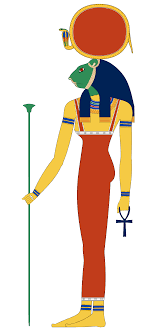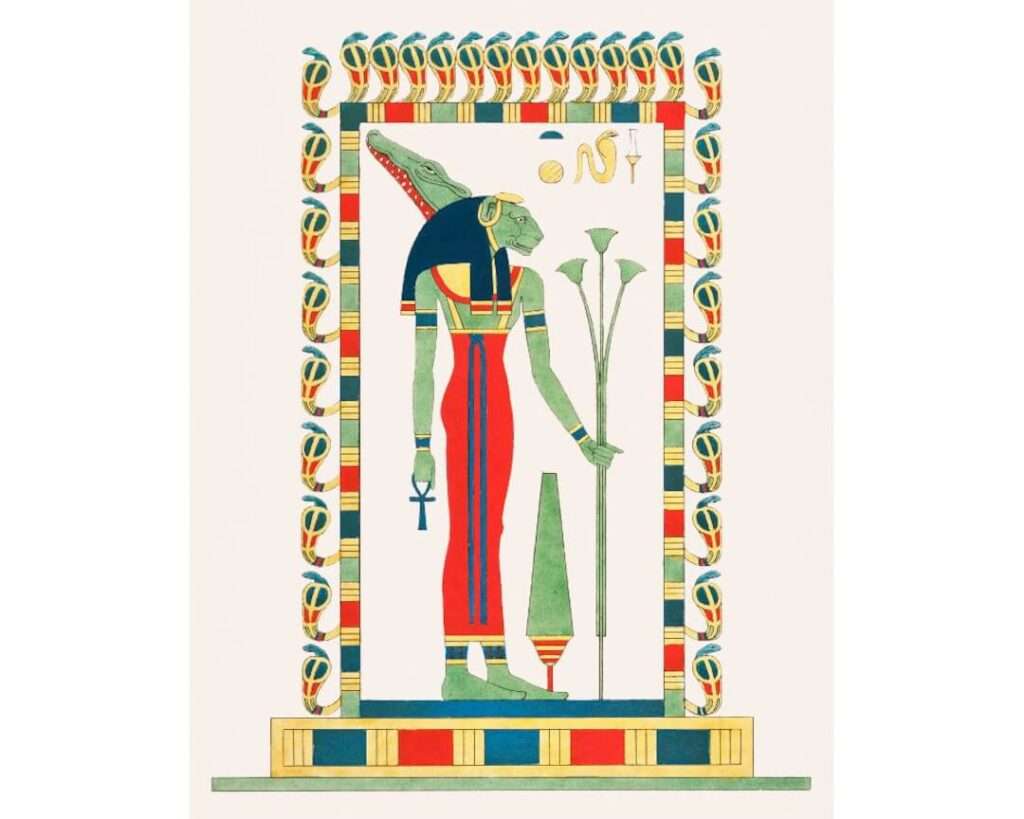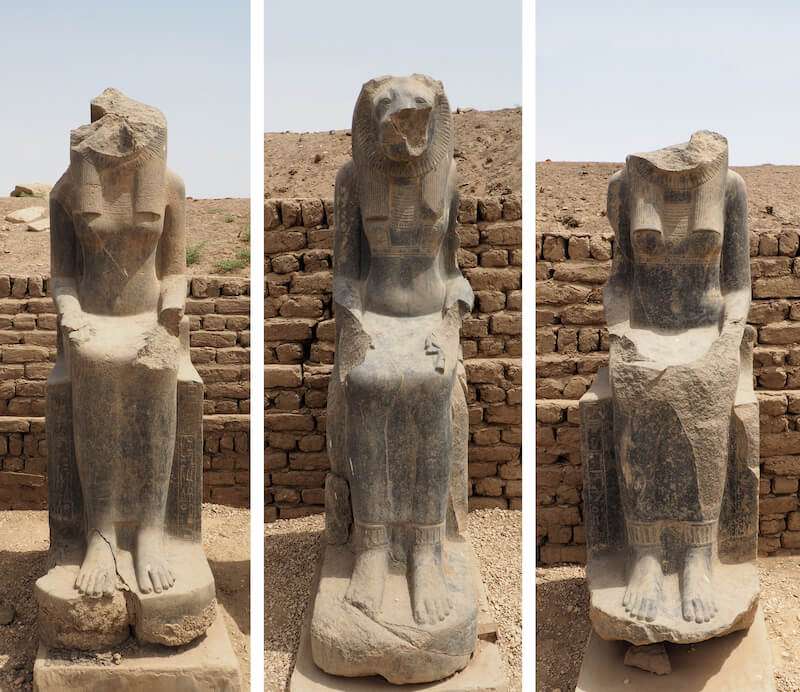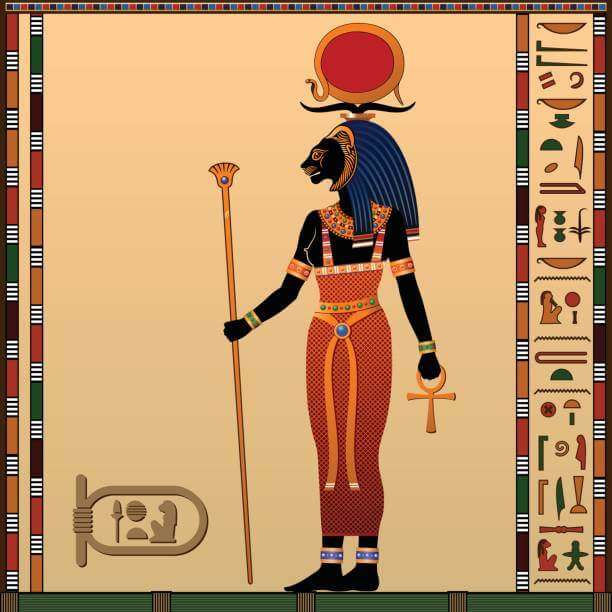I. Introduction
In the mystical realm of ancient Egyptian mythology, Sekhmet emerges as a deity of formidable power and complex character. Known for her lioness visage, Sekhmet is a symbol of both destruction and healing, echoing the dual nature of life’s intricate dance. We embark on a captivating journey to unveil the enigmatic persona of Sekhmet, drawing from a rich tapestry of archaeological discoveries, timeless texts, and enduring oral narratives. Our expedition is not merely an exploration but an in-depth analysis, intent on offering readers not just facts, but insights woven with authenticity, precision, and scholarly rigor. We commit to originality, comprehensiveness, and factual integrity with every stride in this journey, aiming to shed light on the multifaceted aspects of Sekhmet’s legacy within the records of one of civilization’s earliest and most enigmatic cultures.
| Origin | Ancient Egyptian Civilization |
|---|---|
| Classification | Goddess |
| Family Members | Ra (Father) in some accounts, Ptah (Husband) in others, Nefertum (Son) in others |
| Region | Egypt |
| Associated with | War, Healing, Fierce Power, Protection, Lioness |
II. The Legend of Sekhmet
A. Mythological Stories
In the rich tapestry of Egyptian myth, Sekhmet’s narrative weaves complexity and awe. One prominent tale recounts Sekhmet’s birth from the fire of Ra’s eye, positioning her as a warrior goddess, fierce and unyielding. Each account of Sekhmet is meticulously examined in this article, with a close focus on primary sources. Ancient papyri, temple inscriptions, and artifacts serve as silent yet eloquent witnesses, recounting a tale of a goddess revered and feared in equal measure. In our exploration, we delve beyond the superficial recounting of myths. We explore the nuanced roles Sekhmet plays, as a bringer of both havoc and harmony. We not only observe every line of ancient text and curve of an artifact but also interpret them, offering readers profound, original insights into the myths that have endured across millennia.

B. Symbols and Imagery
The image of a lioness, regal and fierce, is synonymous with Sekhmet. Yet, there’s a profundity in the symbols associated with her that extends beyond the initial visual impressions. Our investigation takes us through the hallways of time, where relics and inscriptions narrate a story that’s as vibrant as it is enigmatic. Recent archaeological expeditions have unveiled artifacts imbued with symbolism previously unseen. We interpret these findings, piecing together a narrative that enriches our understanding of Sekhmet’s iconic imagery. We analyze the intertwining of art and mythology, presenting a renewed perspective grounded in factual discovery and elevating the discourse to uncharted terrains of insight and interpretation.

III. Sekhmet’s Role in Ancient Egyptian Civilization
A. Spiritual Significance
Sekhmet’s divine stature in ancient Egyptian civilization is firmly anchored in her profound spiritual significance. Within the sacred walls of temples and upon the enduring surfaces of inscriptions, the narratives of her divine power and multifaceted roles unfold. She is not only a warrior goddess but also a healer, embodying the dual aspects of destruction and restoration. Each temple dedicated to Sekhmet, adorned with intricate inscriptions, reveals an elaborate spiritual narrative. The meticulous architecture and sacred artifacts, subjected to careful analysis, unmask a goddess whose wrath and mercy influenced not only the spiritual ethos but also the societal norms of ancient Egypt.

B. Influence on Daily Life
To understand Sekhmet is to unravel the complex fabric of daily life in ancient Egypt. The lioness goddess’s influence permeated the mundane and the extraordinary, shaping social norms, cultural expressions, and individual behaviors. Our investigation harnesses a diverse array of historical records, from personal diaries of ancient Egyptians to official inscriptions on temple walls, illuminating Sekhmet’s pervasive influence. Worship of the goddess was not confined to the spiritual elite; it trickled down to every stratum of society, influencing art, literature, and daily rituals. Each piece of evidence is not only a window into the ancient civilization’s reverence for Sekhmet but also a testament to her enduring legacy that transcends time and cultural evolution.
IV. Comparative Analysis
A. Sekhmet and Other Gods
Sekhmet’s majestic aura is unique, yet when juxtaposed with other Egyptian deities, an intricate mosaic of divine power and influence unveils itself. We conduct a meticulous comparative analysis, weighing the attributes, myths, and influences of gods like Ra, Osiris, and Isis against the enigmatic Sekhmet. We draw every comparison from a rich source of factual information, bringing to life the distinctive characteristics and interconnected narratives of the deities. Scholarly expertise guides this exploration, ensuring that each correlation and contrast is not merely an observation but a deeply insightful analysis, underpinned by rigorous research and an unyielding commitment to factual integrity.

B. Cross-Cultural Connections
The echoes of Sekhmet’s myth resonate beyond the confines of ancient Egypt, finding parallels and intersections with myths from distant lands. Our exploration extends to the mythological landscapes of civilizations like the Babylonians, Greeks, and Romans, weaving together a narrative that transcends geographical and cultural boundaries. Scholarly research forms the bedrock of this cross-cultural odyssey, ensuring every connection drawn is steeped in factual accuracy and intellectual rigor. The tapestry of Sekhmet’s mythology, thus, transforms into a global narrative, illustrating the universality of certain themes and the distinctive adaptations that breathe uniqueness into every culture’s mythological narratives.
V. Sekhmet’s Legacy
A. Modern-Day Interpretations
The echoing roars of Sekhmet, the enigmatic lioness goddess, have transcended the ancient sands of Egypt and resonate profoundly in the modern era. In our pursuit to unravel Sekhmet’s enduring legacy, we examine contemporary interpretations, unearthing a fascinating amalgamation of ancient myths and modern sensibilities. Scholars, artists, and theologists alike have delved into the depths of Sekhmet’s narratives, each interpretation bearing the distinctive imprint of contemporary contexts. We present an analysis of these adaptations, showcasing an intricate intersection of ancient mythology and modern perspectives. This exploration offers readers an insightful journey through time, where Sekhmet’s mystical aura is not only reimagined but also profoundly rooted in her ancient origins.

B. Sekhmet in Popular Culture
Sekhmet’s pervasive influence is notably evident in literature, art, and media. From the intricate prose of modern authors to the captivating portrayals in visual arts and the dynamic representations in film and media, Sekhmet continues to wield her enigmatic allure. Our discourse meticulously examines each portrayal, ensuring it is richly grounded in historical and mythological accuracy. We spotlight instances, not just where storytellers retell Sekhmet’s myths, but where they reimagine them, each adaptation illuminating the timeless fascination surrounding this ancient deity. Each adaptation invites readers on a narrative expedition, balanced between factual representation and the creative fervor of contemporary interpretations.
VI. Conclusion
We’ve traversed the multifaceted landscape of Sekhmet’s mythology, from the ancient texts engrained with her fierce yet protective essence to the modern adaptations echoing her enduring legacy. The lioness goddess, embodied in intricate artifacts and recounted in mythological tales, reveals a narrative rich in contrasts – a warrior and a healer, a feared deity and a revered protector. Our exploration, anchored in rigorous research and scholarly insights, has illuminated Sekhmet’s pervasive influence across time and cultures. As we reflect on this enigmatic deity, we recognize that Sekhmet’s legacy isn’t confined to historical annals but continues to evolve. It echoes the ancient yet ever-relevant dance of destruction and restoration that her essence defines.
